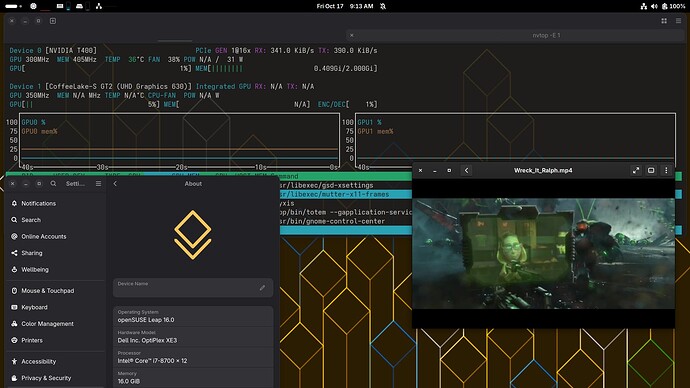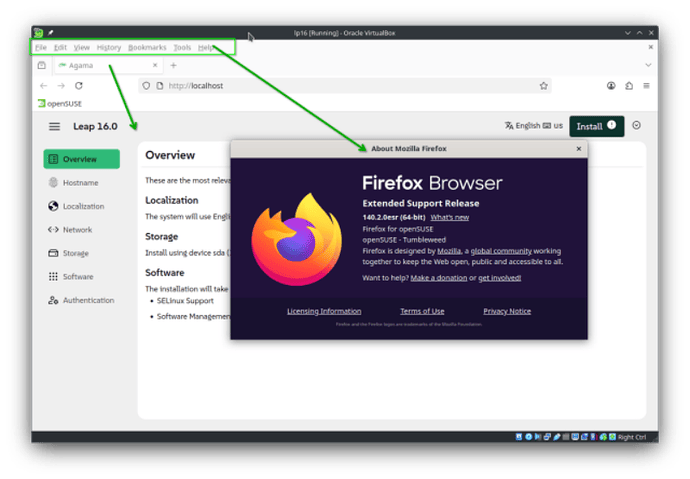I set up x11vnc 22 years ago. Why replace it with a wrapper when it still works. I guess SLES dropped it so Leap did too, It was in Slowroll, could the source x11vnc from Tumbleweed/Slowroll be compiled for Leap 16?
What will do a vnc session when wayland is the only option? rdp (the Microsoft answer to vnc) is not what vnc users want. When you have 22 years of support to replace. I did get everyone I support moved to intel gen8 cpu’s or newer. I used the same way I moved them from single core to core 2 cpus to move them from core 2 to gen 8 cpus. An ethernet cable with an end that says old computer and and end that says new computer. and a script that move the old home directory to the new computer and the old opt directory to the new computer. 85 computers were down - only one had an issue that that was the hard drive was failing and I had to copy from the weekly backup drive to get everything moved.
Like most of the folks I support, we are old, I am the next youngest at 74.
We moved off Windows after XP because it changed. Gnome looked like what we were used to.
Gnome changed, but old Gnome became MATE. It still looks like Windows XP.
We started in redhat, then fedora, then Opensuse. I figured out how to update without starting over.
When you have legacy programs running in wine with entries in the menu, a fresh install looses all of that. Now you have to find drives for the printers, set up wifi (most have no idea what their wifi password is). With people that cannot find the power button on their laptop (it used to be on the side, it used to be above the f8 key, it is on the keyboard beside the backspace key).
Think about supporting the end users, these changes are why few windows abandoners are choosing OpenSUSE
Ubuntu and Mint Linux are much more Windows friendly as MATE is a standard desktop, KDE and Gnome are not Windows users expecting when they try the live versions of Leap Software. so they go on to Mint MATE and stay.
Wayland is what governments want for their security. Most non-business windows users have no idea about security, which is why so many loose their money. I tell all those I support not to allow anyone on their Windows computers, but they are old and 2 so far have lost over $80,000 from their savings and checking “Because Microsoft and Verizon called saying they needed access to fix a security problem”. So far not a penny has been recovered.
One windows user conferenced me in an I informed them that the FBI was tracing these calls and they hung up as soon as I said it. She did not loose a cent. She was shocked - the phone said Microsoft as the caller. I explained that it was easy to make any user appear as the caller.
I no longer have the desire to learn new stuff because it might be better. I do not like change, I have become Sheldon Cooper for that.
I wrote a parallel init bootup for Walmart in 1996. It did what systemd does today. systemd does not make it any simpler.
The computer is supposed to be a tool. Not something that has to be relearned because someone want to stop supporting a legacy program that worked fine for 99% of the world (X11).
I have had enough of making changes. Teamviewer said I was commercial, so I changed to Anydesk, they said I was commercial, so I changed to Rustdesk, atleast Rustdesk lets me be my own host.
ssh and x11vnc have be the lifeline to the people I support. The have an emergency USB drive that automatically connects me to see them via a gateway box.
I can mount and fix their programs remotely. Once I get connected I can vnc to that USB drive to do things faster.
I do cannot afford to buy another 90 USB drives to hand out with Leap 16. Tumbleweed caused me issues that I know none of those I support could have fixed. I gave up on Slowroll as things I needed stopped working and I have to get appimages to work around the problems.
Maybe the correct thing that OpenSUSE could do is make 15.6 a 5 year release and forget 16.0. and just offer security fixes. Let commercial folks buy a SLES license. I did for TTM (Total Transaction Management is a company that supports Walmart and many other customers like Lufthansa and many Casinos .)

